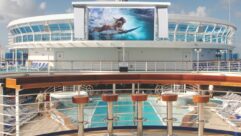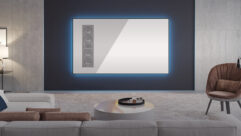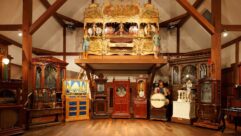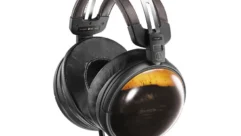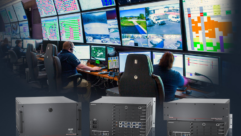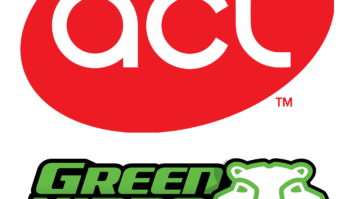
Harnessing Fiber Optics for Ultra-high-resolution Signage
Jun 10, 2008 12:00 PM,
By John W. DeWitt

FreshDirect’s 5850-square-foot outdoor Lighthouse LED display, located next to the Queens Midtown Tunnel in New York City, is powered by an uncompressed 600Mbps streaming DVI signal from FreshDirect’s Long Island City headquarters.
New digital signage and related AV technologies are harnessing more and more of the theoretically unlimited bandwidth of the fiber-optic transport medium. This gives application architects, integrators, and users the opportunity to power large, extremely high-resolution displays—including 1920x1200p HD progressive—using limited or no compression. Notable examples, employing fiber-optic technology from Emcore, include FreshDirect’s 5850-square-foot outdoor Lighthouse LED display in New York City as well as numerous theaters, projectors, and digital signs deployed at the Freedom Forum’s interactive Newseum in Washington, D.C.
“With digital signage or any other sort of video communications taking place over distances, there’s more and more a need to move the signals over fiber-optic cable,” says Chris Larocca, vice president and general manager of Emcore’s broadband division. “Especially with high-definition and higher-bandwidth streaming video, you can only do so much over copper. And with the widespread deployment of fiber architecture, you have the infrastructure to deploy more content and bandwidth for HD applications.”
This infrastructure build-out, along with the dramatic increase in HD programming as we approach the 2009 analog shutoff, is precipitating the need for usage of optical technologies.
“Integrators and content creators are able to do more than five years ago because that fat pipe is out there,” Larocca says. Moreover, fiber’s cost is no longer a barrier. “Now the cost for laying fiber is identical to the cost of laying traditional copper—it’s almost as cheap as fishing wire,” he says. “[In many cases] users are leasing fiber lines that are already installed. There was a huge fiber overbuild originally, so now it’s often simply a matter of utilizing that infrastructure.”
The FreshDirect outdoor digital display—located next to the Queens Midtown Tunnel in New York City—exemplifies how signage applications can push the envelope of size, resolution, and visibility by employing fiber optics and optical transport platforms. The sign itself is a Lighthouse SuperScreen LED system that has laid claim to being the largest such display in the United States. The display produces more than 8,000 NITS, for full daylight visibility, and it is powered by an uncompressed SDI feed from FreshDirect’s headquarters in Long Island City, N.Y.
Harnessing Fiber Optics for Ultra-high-resolution Signage
Jun 10, 2008 12:00 PM,
By John W. DeWitt
The FreshDirect sign’s bandwidth usage—600Mbps—required modification of the Opticomm DVX-5000 model transport platform, which conforms to SMPTE 259 M standards for uncompressed SDI and normally supports data rates from 143Mbps to 540Mbps with transmission ranges up to 40km.
Alon Dagan, Emcore’s director of broadband video, says he sees more and more applications shifting from VGA to DVI signals over fiber, with the advantage of requiring little or no compression. The company also has a new AV and data transport platform, Optiva, that supports uncompressed DVI, VGA, and RGB signals over a single fiber. This reduces the cost and implementation complexity of using multiple fibers and multiplexing to handle large bandwidth applications with many screens.
Target applications for Optiva include airports, train stations, and museums. “Instead of using multiple wavelengths and multiple fibers, we can use one fiber to deliver a large amount of bandwidth very efficiently—either with no compression or less compression,” Dagan says. “This can simplify [integration] and reduce costs by using a single fiber, you can switch the signal easier, you can send to multiple sources and switch on the fly, all of which is harder to do with traditional approaches.”
Emcore’s single-fiber DVI-1000 systems will be put to use powering a variety of theaters, projectors, and digital signage located on seven levels of The Freedom Forum’s Newseum, an interactive museum of news located adjacent to the Smithsonian in Washington, D.C. Emcore’s technology, supporting a progressive resolution of 1920x1200p, will transport uncompressed video feeds via fiber throughout the new facility.
For more information, visit www.emcore.com, www.lighthouse-tech.com, and www.opticomm.com.


